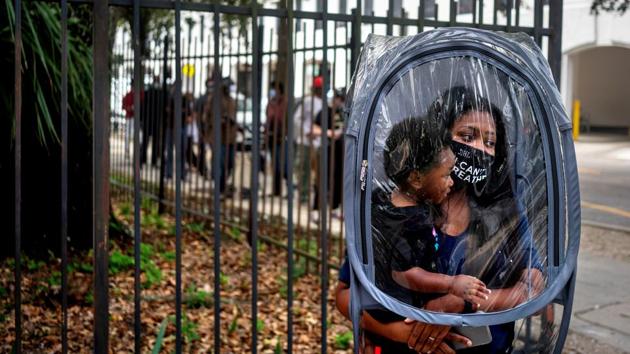Covid-19: What you need to know today
Wednesday evening, as the haze enveloped Delhi, it was clear that Thursday would be bad. Sure enough, the Capital woke up to proper smog on Thursday (the smog did make things warmer from the premature chill that’s settled in over the northern plains).
Wednesday evening, as the haze enveloped Delhi, it was clear that Thursday would be bad. Sure enough, the Capital woke up to proper smog on Thursday (the smog did make things warmer from the premature chill that’s settled in over the northern plains). As this column – the 199th instalment of what began on March 19 – is being written in the late morning of Thursday, the light has become better, the sun is out, but the air quality is still bad according to the Sameer app (AQI 472). That AQI level corresponds to what is called “severe” air quality. It’s nothing new for Delhi, of course, but it’s still bad, and likely to get worse.

At this stage, I’d like to reassure regular readers of this column whose eyes are flipping back to the headline that this is still a daily dispatch on what you need to know about Covid-19 today, not one on what you need to know about Delhi’s bad air today. There are two reasons why I began with the pollution.
AIR POLLUTION AND COVID
Delhi’s first official “severe” AQI day this season is inopportunely timed – it comes shortly after a study published in a respected journal found that sustained exposure to bad air – specifically PM 2.5 particulate matter – has a direct correlation with Covid-19 mortality rates.
The first is that Delhi’s first official “severe” AQI day this season is inopportunely timed – it comes shortly after the respected journal Science Advances published a paper titled “Air Pollution and Covid-19 mortality in the United States: Strengths and limitations of an ecological regression analysis”.
According to Francesca Dominici of Harvard University, and other authors, sustained exposure to bad air – specifically PM 2.5 particulate matter, with a diameter less than 2.5 microns – has a direct correlation with Covid-19 mortality rates. This is the point at which deniers are likely to wonder how the researchers managed to arrive at this conclusion given the recency of Covid-19, and the fact that the effects of exposure to bad air are, much like the effects of smoking, likely to set in over time. The researchers got around this by using an ecological regression analysis of “historical exposure to PM 2.5” and Covid-19 mortality rates.
RELEVANCE FOR DELHI
According to the study, an increase of one microgram per cubic metre “in the long term average of PM 2.5 is associated with a statistically significant 11% increase in the country’s Covid-19 mortality rate”. That’s bad news for Delhi, where Covid-19 cases are on the rise again. The paper, however, only seeks to establish a link between bad air and Covid-19 mortality; it did not study linkages between incidence of the disease and bad air.
Shorn of jargon, this meant taking average PM 2.5 concentrations for a long period of time (the researchers took daily data for 16 years) and saw what impact this has on Covid-19 death rates across US counties. They used what is called a negative binomial mixed model for this. They also adjusted their analysis for other factors, including population density, poverty, education, and weather. While admitting that their study can’t “adjust for individual level risk factors”, they suggest that it can be improved by incorporating “individual-level” data.
The study found that an increase of one microgram per cubic metre “in the long term average of PM 2.5 is associated with a statistically significant 11% increase in the country’s Covid-19 mortality rate”.
That’s bad news for Delhi, where Covid-19 cases are on the rise (again). There are other studies, including some peer reviewed ones from Europe that previously established the link between air pollution and Covid-19 mortality, but none followed as rigorous a methodology as the Harvard one. And none established as strong a correlation.
To be sure, the study only seeks to establish a link between bad air and Covid-19 mortality; it did not study linkages between incidence of the disease and bad air – which means that there is no basis for claiming that there is a relationship between Delhi’s air pollution and the spike in case numbers (although there may well be one).
The second reason is that there is a great deal of similarity in how India and Indians have dealt with the two health crises, air pollution and Covid-19.
Understanding and responding to both requires a fundamental belief in, and respect for science and data, something that hasn’t always been evident. And successfully managing both requires, at least in part, behavioural change, where, again, everyone concerned (from administrations down to all of us, the people) has been found wanting.






